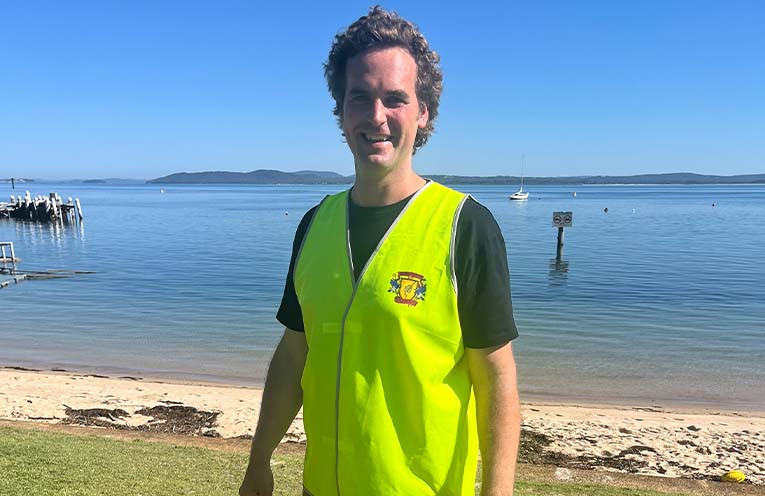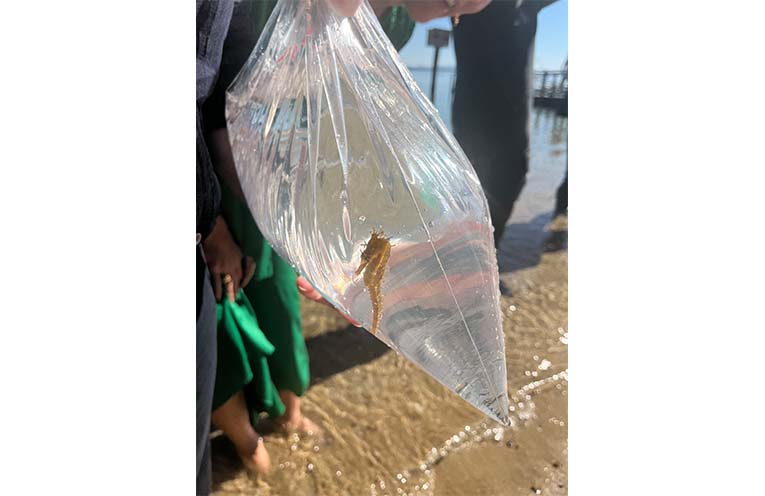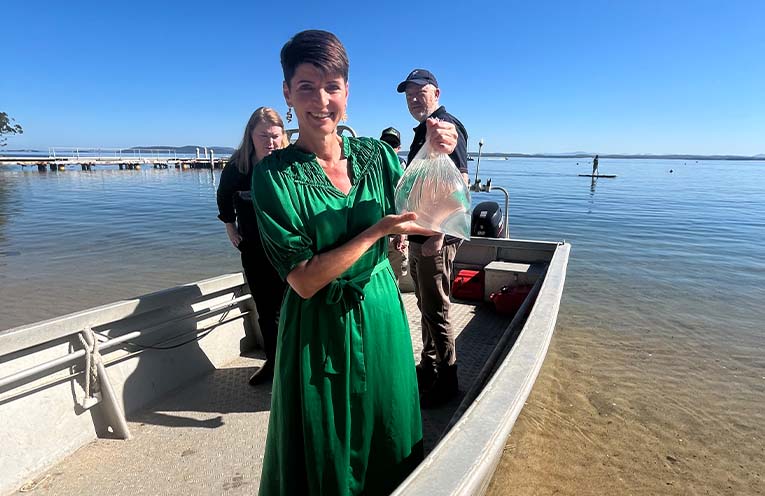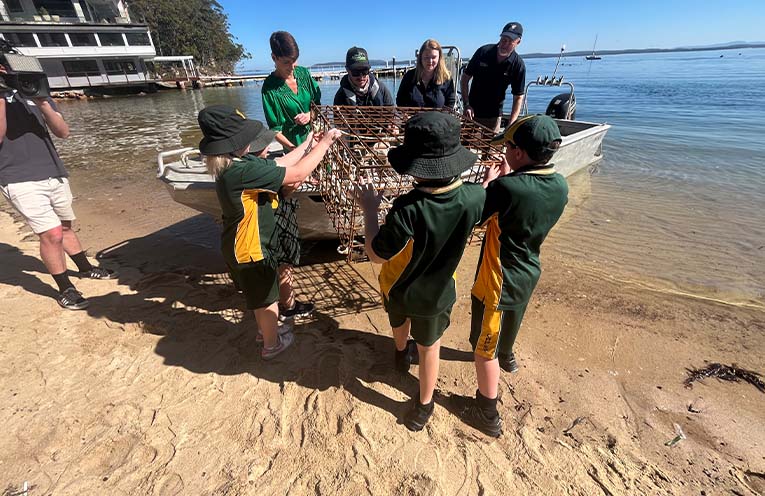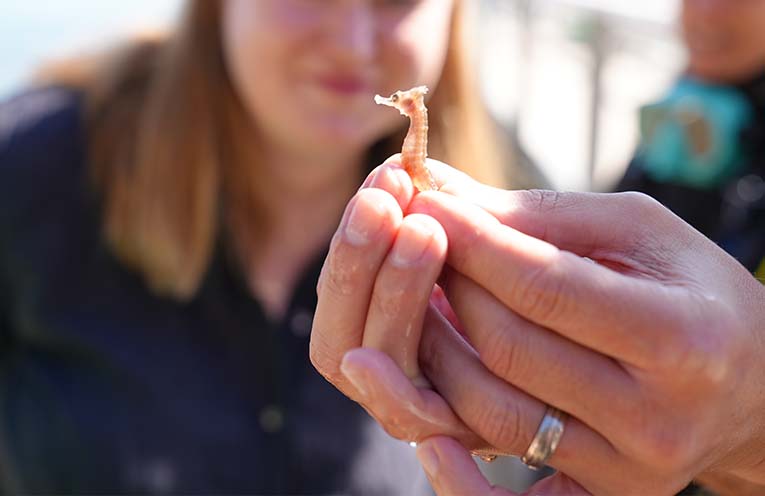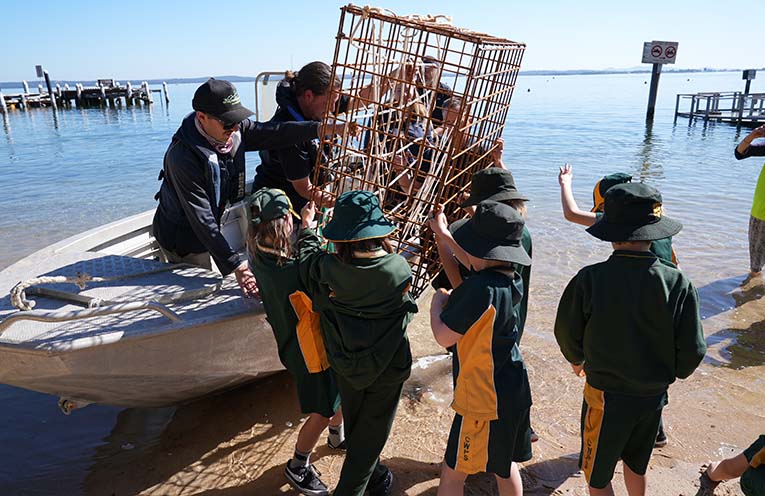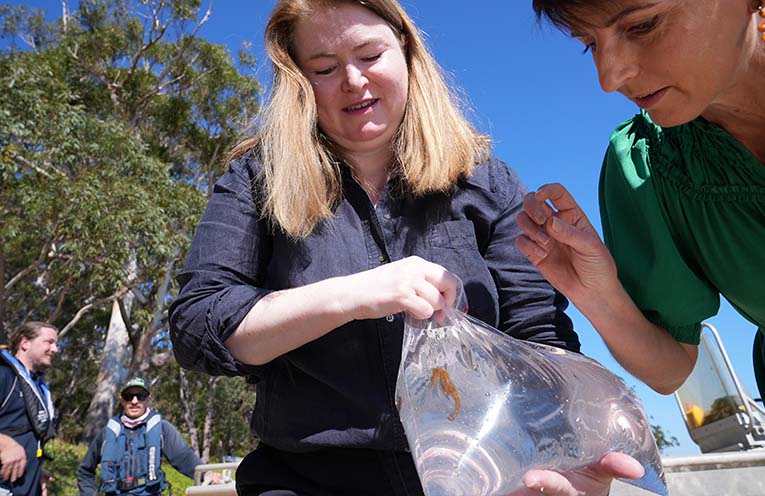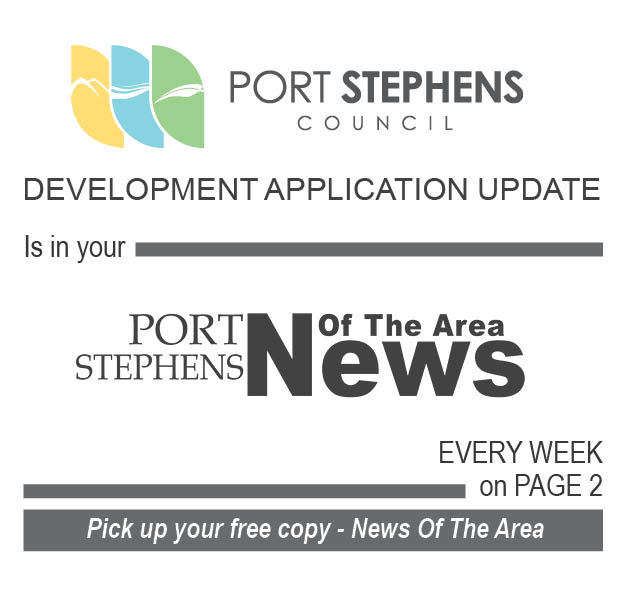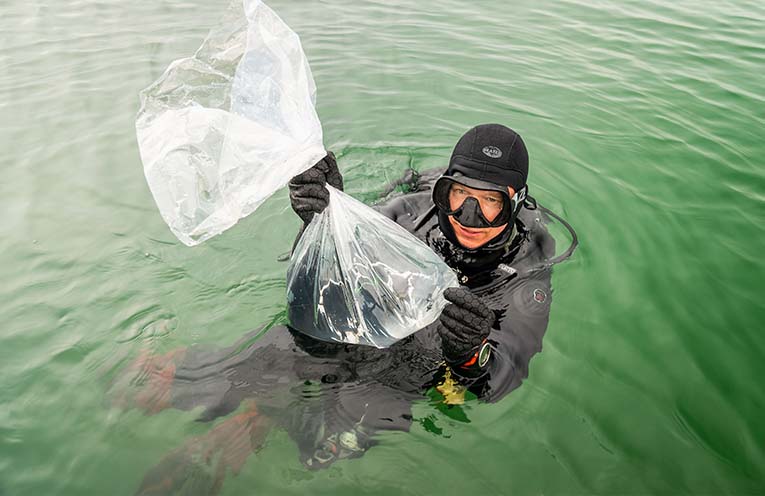
LITTLE Beach at Nelson Bay was the location for the release of 132 endangered baby seahorses last Friday, with local school children playing a key role.
Fifteen schools across Port Stephens have recently been involved in an educational program which spotlights the endangered White’s Seahorse, a species native to Australia’s east coast, offering students a unique opportunity to play a direct role in its conservation.
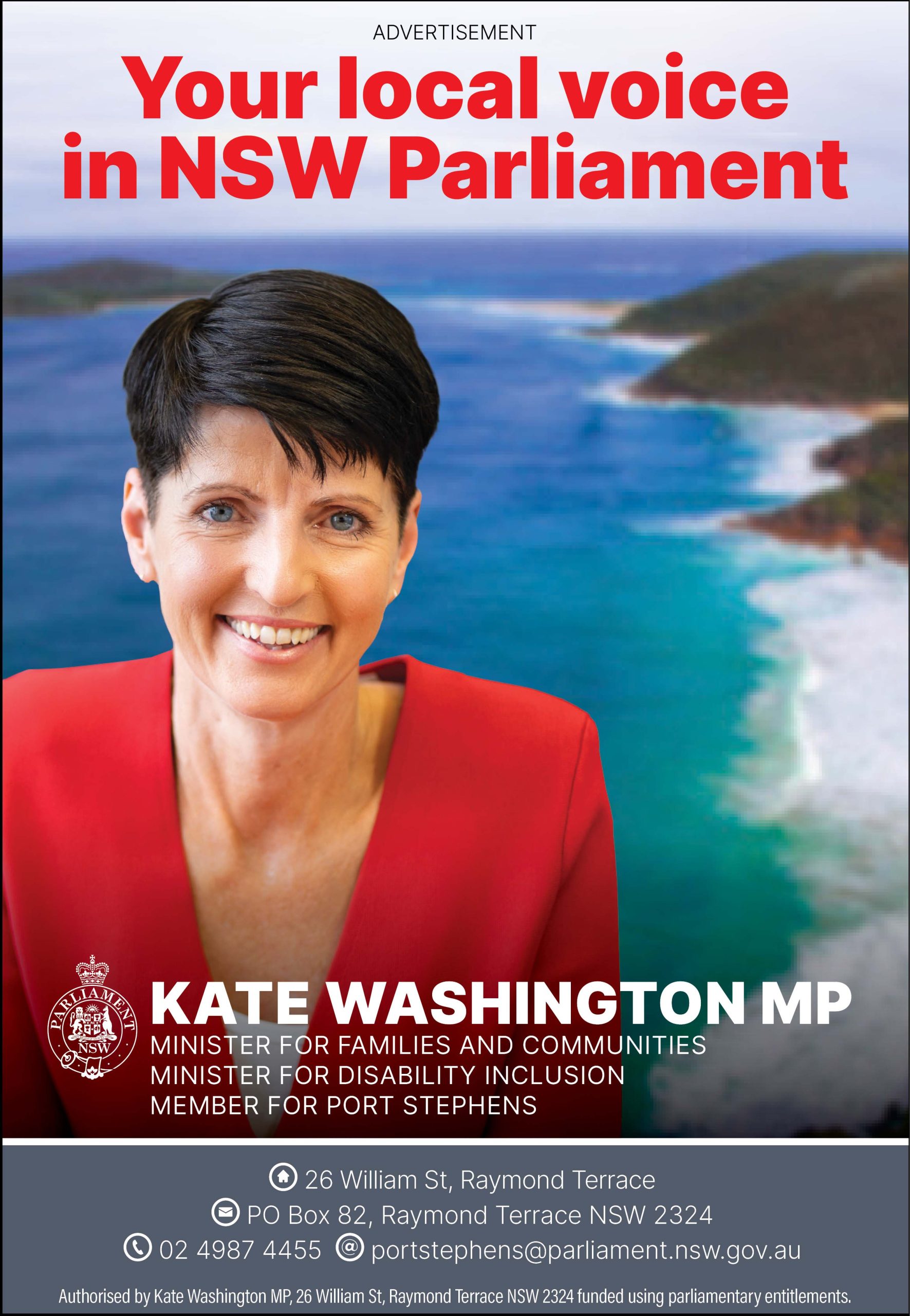 Advertise with News of The Area today.
Advertise with News of The Area today.It’s worth it for your business.
Message us.
Phone us – (02) 4981 8882.
Email us – media@newsofthearea.com.au
Through a series of bespoke lessons and activities by program organisers Project Humble, students gained in-depth knowledge about the seahorse, its habitat, and the challenges it faces.
As part of the program, each participating school constructed a ‘Seahorse Hotel’.
These hotels, strategically sunk at set locations around Port Stephens with collaborating partner Dr David Harasti from the Department of Primary Industries (DPI), serve as safe havens for captive-bred seahorses from Sydney Sea Life Aquarium being reintroduced into the wild.
These hotels start as artificial habitats, and rapidly become covered in algae, sponges and corals.
Over time the artificial structure collapses, leaving a natural habitat perfect for seahorses.
“We’ve got fifteen seahorse hotels that the kids have built in class as part of their learning and their curriculum, that are going to be deployed in the ocean here in the marine reserve to help save the White’s Seahorse,” said Ben from Project Humble.
“This area has traditionally been the biggest population of the White’s Seahorse, but the floods we had a few years ago decimated their habitat, so part of what these hotels will do is re-establish that habitat in a more resilient way so that they can be re-introduced.
“There are a few in the area that survived, and they are rare to find when we are scuba-diving, but hopefully what the kids are doing today will change that in the future.”
Around 400 local students attended last Friday’s release, and helped load the seahorse hotels onto boats, which were then taken out to the marine reserve for release.
Port Stephens MP Kate Washington took a hands-on approach to proceedings, boarding the Port Stephens Fisheries Institute boat to help deploy the first hotel.
“It’s very special to be releasing baby seahorses to make their home in seahorse hotels in Port Stephens,” Ms Washington said.
“I’m delighted to see local students getting first hand experience in marine conservation, by building and installing seahorse hotels.
“The successful breeding of these baby White’s Seahorses is a testament to the dedicated staff at the Port Stephens Fisheries Institute.”
Following last Friday’s release, a total of 1,000 White’s Seahorses have been released into Port Stephens this year.
There are now 60 seahorse hotels installed at The Pipeline and Little Beach dive sites.
“While White’s seahorses in Port Stephens have significantly declined over the past decade, the implementation of the Government’s new captive-breeding program and installation of seahorse hotels are positive steps towards their recovery,” said Agriculture Minister Tara Moriarty.
“We hope these stocking events will help the White’s seahorse re-establish a home here at Port Stephens and will ensure the recovery of this iconic and beloved Australian species.”
The program has been supported with funding from the Federal Government’s Saving Native Species grants program.
By Simon EKINS

